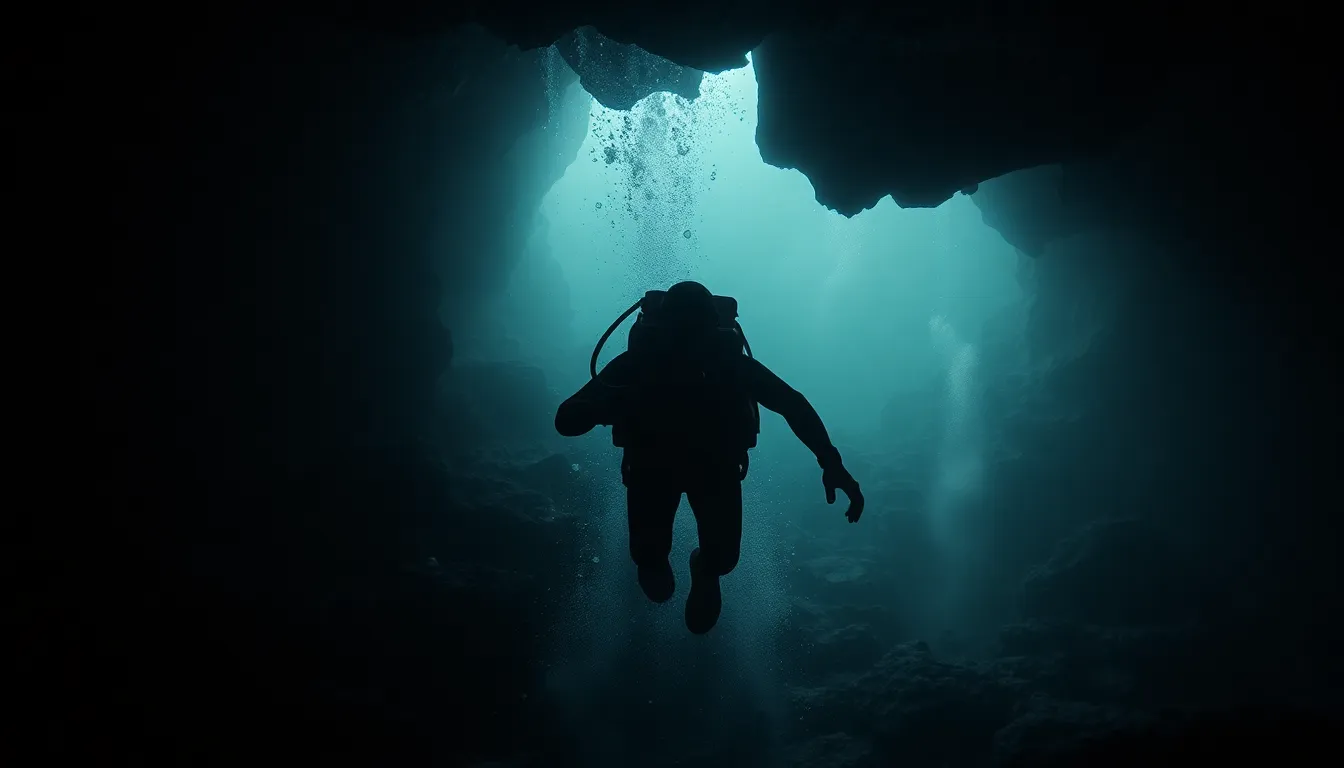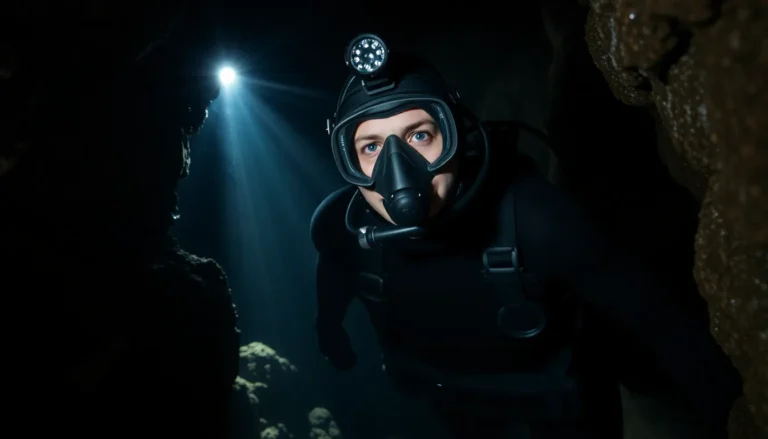Cave diving in Anglehozary might sound like an exhilarating adventure, but it’s not all fun and games. Picture this: you’re gliding through stunning underwater passages, and suddenly, the thrill of exploration turns into a race against time. With unpredictable currents and tight spaces, one wrong move could lead to a not-so-fun game of hide and seek with your own oxygen supply.
Table of Contents
ToggleOverview of Anglehozary Cave Diving
Anglehozary cave diving offers unique underwater views. Divers encounter stunning formations, but the potential hazards demand respect. Limited visibility often complicates navigation. Participants face the challenge of managing air supply within tight spaces. Oxygen depletion can occur quickly, creating a critical situation.
Unpredictable currents can catch divers off guard. Faster water movement alters underwater conditions, making control difficult. Preparation includes understanding weather patterns and current forecasts. Environmental factors can rapidly change, impacting safety.
Trained instructors emphasize the importance of experience. Newer divers may struggle with the technical demands of cave diving. Specialized training equips divers with necessary skills for emergency situations. Should divers lack experience, they might find themselves overwhelmed.
Equipment checks are vital before each dive. Gear malfunctions can lead to dire consequences. Divers must always ensure their tanks, regulators, and lights function properly. Constant vigilance throughout the dive enhances safety.
Disorientation can occur easily in cave systems. Getting lost in narrow passages can escalate risks. Adhering to established diving protocols minimizes confusion. Creating a buddy system fosters safety and support.
Overall, Anglehozary cave diving combines beauty with risk. Understanding the dangers can lead to safer exploration. Proper preparation and awareness allow divers to appreciate this stunning environment while minimizing life-threatening situations.
Common Risks Involved

Anglehozary cave diving presents several significant risks that divers must recognize. Understanding these dangers promotes safer exploration.
Hazards of Limited Visibility
Limited visibility often challenges divers in cave systems. Conditions vary based on sediment and water movement. Dark passages can disorient even experienced divers; navigating becomes difficult without clear sightlines. Additionally, underwater formations can hide potential hazards. Divers must carry reliable light sources to mitigate this risk. Specialized training enhances skills for managing limited visibility.
Dangers of Strong Currents
Strong currents pose serious threats to divers in Anglehozary caves. Unexpected changes in water flow can push divers off course. Maintaining control in these conditions proves difficult, particularly for those lacking experience. Divers must assess current forecasts before embarking on dives. Failure to do so could result in dangerous situations or entrapment. Safety protocols, like using anchoring techniques, can help maintain stability in turbulent waters.
Potential for Cave Ingress
Cave ingress represents another significant danger in underwater exploration. Structural weaknesses can lead to collapses, trapping divers in confined spaces. Recognizing topographical features allows for better assessment of risks. Regularly checking for new rock falls can also enhance safety. Situational awareness prepares divers for potential shifts in the cave environment. Employing safety measures like buddy systems ensures immediate support during emergencies.
Psychological Factors
Cave diving in Anglehozary affects divers psychologically, contributing to the inherent dangers. Factors such as panic and disorientation can significantly impact safety and decision-making under pressure.
Panic and Disorientation
Panic often arises during unpredictably stressful moments underwater, where limited visibility and confined spaces trigger anxiety. Disorientation can stem from dark passages, leading divers to lose their sense of direction. Clarity becomes difficult to maintain in such environments, making it easy to become overwhelmed. Maintaining composure is crucial for navigating challenging terrain. Awareness of surroundings allows divers to stay oriented and focused, thus reducing panic. Relying on proper training and communication can help counteract the disorienting effects.
Decision-Making Under Pressure
Decision-making becomes critical in high-stress situations underwater, where rapid responses are essential. Divers may face situations demanding quick judgments, often about oxygen supply and navigation. When under pressure, clarity of thought can diminish and lead to mistakes, resulting in dangerous consequences. Trusting learned protocols and relying on established buddy systems enhances decision-making capabilities. Familiarity with the environment can further empower divers to make informed choices. Staying calm and focused serves as an anchor, promoting intelligent responses to challenging scenarios.
Equipment Failures
Cave diving relies heavily on functional gear, and equipment failures can turn a thrilling experience into a dangerous situation.
Importance of Reliable Gear
Reliable diving gear is vital for safety in Anglehozary’s unpredictable underwater environment. Without properly functioning equipment, divers face significant risks, including equipment malfunctions during critical moments. Each component, from tanks to regulators, plays a role in preserving life underwater. Divers must perform regular inspections and maintenance to ensure gear functions correctly. Emergency situations can arise without warning, and dependable gear limits vulnerability. Comprehensive pre-dive checks prevent accidents attributed to faulty equipment.
Consequences of Malfunctions
Malfunctioning equipment leads to severe consequences for divers. A failed regulator can cause an air supply issue, resulting in panic and urgency. Loss of light equipment during exploration can result in disorientation, making navigation nearly impossible. Inadequate buoyancy control devices can lead to uncontrolled ascents or descents, increasing the risk of decompression sickness. Situational awareness diminishes when equipment fails, leading to poor decision-making and heightened stress levels. Each malfunction affects not only the individual diver but also the entire team, amplifying potential dangers in a confined cave system.
The Need for Training and Experience
Training and experience play vital roles in safe diving practices within Anglehozary Cave. Knowledge of underwater navigation becomes crucial, as visibility can quickly decrease due to sedimentation. Familiarity with specialized gear prepares divers for emergencies. Understanding the specific challenges this environment poses helps mitigate risks.
Instructors emphasize the importance of extensive training. Divers lacking experience may struggle with the technical skills necessary for safe exploration. Practical knowledge equips divers to handle unexpected situations, including strong currents and equipment malfunctions. Engaging in rigorous training enhances confidence for both new and seasoned divers.
Preparation extends beyond technical skills. Familiarization with cave systems and environmental factors also contributes to safety. Recognizing potential hazards allows divers to navigate more effectively. Additionally, practicing emergency protocols under simulated conditions prepares divers for real-life scenarios.
Assessment of one’s skills should be ongoing. Divers must regularly evaluate their readiness for the unique challenges encountered in cave diving. Engaging in peer support and buddy systems offers further safety mechanisms, fostering a collaborative approach to navigation.
Regular equipment maintenance cannot be overlooked. Checking gear before each dive ensures reliability under pressure. Malfunctions can severely compromise safety and lead to dire consequences. Divers should maintain equipment according to established guidelines to enhance performance.
Ultimately, proper training, experience, and vigilance form the backbone of safe cave diving practices. Awareness of surroundings, continuous learning, and equipment readiness enhance diver safety. Prioritization of these elements significantly reduces life-threatening risks during underwater exploration.
Anglehozary cave diving offers breathtaking views but also presents significant risks that require respect and preparation. The combination of unpredictable currents confined spaces and limited visibility can quickly escalate into dangerous situations. Divers must prioritize safety through thorough training reliable equipment and a solid understanding of the cave’s unique environment.
Experience plays a vital role in navigating these underwater passages effectively. Newer divers may find themselves overwhelmed by the challenges they face. By adhering to established protocols and maintaining composure under pressure divers can significantly reduce the likelihood of accidents. Ultimately it’s essential to approach Anglehozary cave diving with caution and a commitment to safety to fully appreciate the beauty it has to offer.


